7 Ways to Snake-Proof Your Bathroom, According to Experts
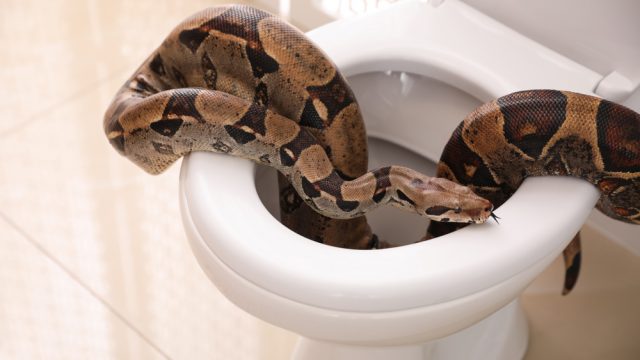
When you think of all the possible places in your house where pest infestations can be a persistent problem, it’s usually your cluttered basement or woefully messy kitchen that comes to mind first. But the truth is that animal invaders can make it into any room in your house if the conditions are right—even your bathroom. And as an area where unexpected intruders are never welcome, it can be especially upsetting to find out you’re sharing your shower with a reptile. Fortunately, you can do a few things to prevent this kind of nightmare scenario. Read on to find out the best ways to snake-proof your bathroom.
READ THIS NEXT: The No. 1 Sign There’s a Snake in Your Kitchen.
1
Remove easy climbing access.

Depending on where you live, your surrounding greenery can be a huge part of your home’s appeal. But experts say that sometimes shrubs can get a little too close for comfort, eventually becoming a highway for unwanted animal access.
“You really want to make it difficult for snakes to climb into your home via tree branches or other structures,” Georgina Ushi Phillips, DVM, advising veterinarian and writer for The Reptile Room, tells Best Life. She adds that creeping vines or trellises along exterior walls can also provide plenty of grip for snakes to work their way up the wall.
“It’s not uncommon for people to leave a bathroom window cracked—especially on a second floor—but if there are tree branches close, it’s possible for snakes to make their way in,” she points out. “Keep branches trimmed and avoid any other structure that can make it easy for snakes to climb into your home or bathroom.”
2
Check for broken pipes.

Even though it may seem like the door is the only way in and out, your bathroom is actually full of entry and exit points in the form of faucets and drains. Normally, these only carry water where it’s meant to go. But in some cases, they can become a passageway for reptiles working their way into your home.
“If you want to keep snakes out of your bathroom, one of the best things is to check for broken sewage pipes,” says Jennifer Mecham, a snake expert and writer with Reptiles Blog. “They can quickly enter the bathroom if there are cracks or holes in plumbing.”
According to A.H. David of Pest Control Weekly, the best way to prevent a break-in via your plumbing is to make some repairs. You can also install electrical non-metallic tubing (ENT)—a concrete-tight material—on the mouth of pipes to prevent any animal or reptile from getting in, he previously told Best Life.
READ THIS NEXT: It’s Snake Season: “Be Aware” in These Areas, Experts Caution.
3
Keep your vents covered.
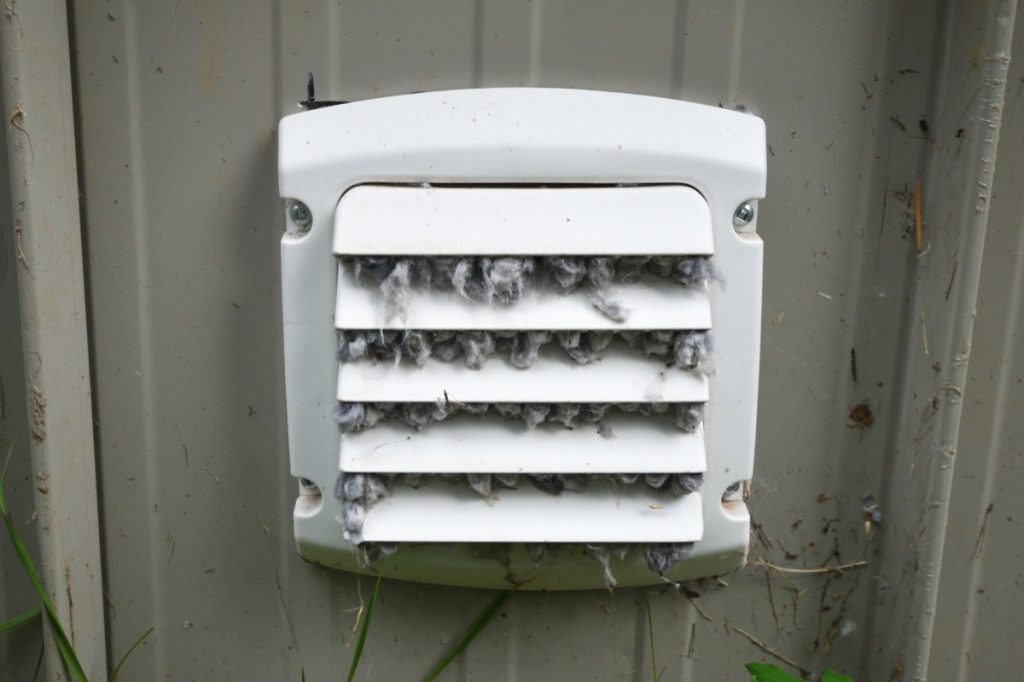
Your home has all kinds of entryways you probably don’t even realize are there. For bathrooms, this can sometimes be the vents that are installed to create plenty of airflow and quickly remove moisture. However, this duct work could also wind up letting a reptile into your washroom. And experts point out that even holes like dryer vents can provide easy access inside—especially if your appliances are in your bathroom to begin with.
“The best way to snake-proof your bathroom is to prevent snakes from getting into your home in the first place. One of the easiest, but often most overlooked, ways for snakes to get into your home is simply crawling into the vents,” says Phillips.
“Snakes will often be attracted to vents because they can be warmer in the winter and cooler in the summer, just like the inside of your home,” she explains. “A simple mesh covering will allow all your exterior vents to function but also keep snakes from wandering in and making their way to your bathroom.”
4
Clear the clutter.
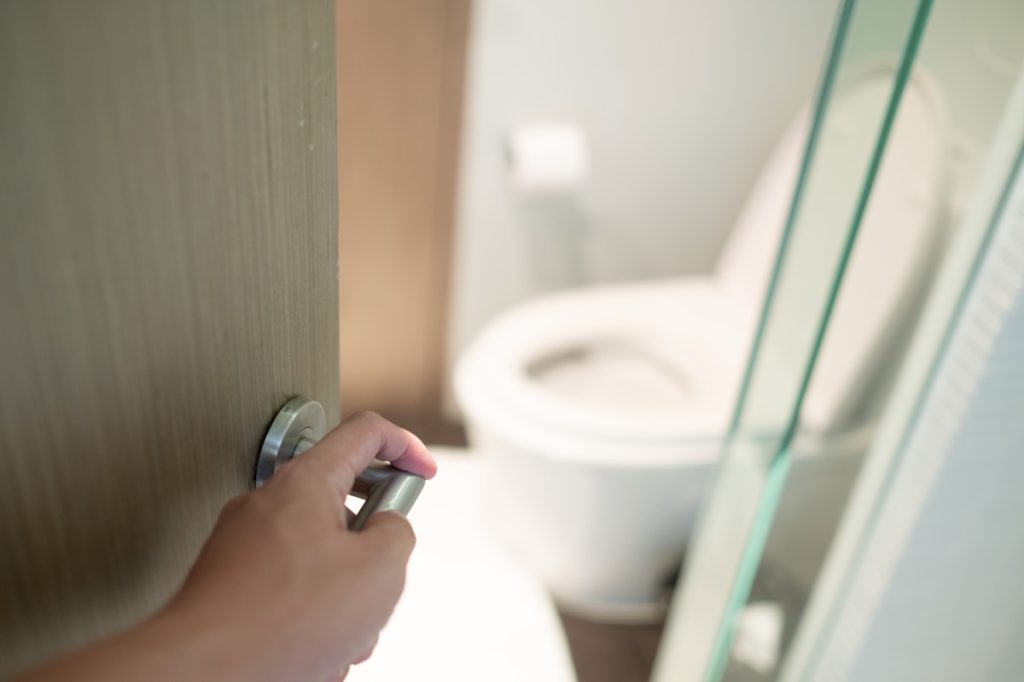
Ironically, the room in the house we use to clean ourselves up can sometimes become pretty dirty. But experts say staying on top of your tidying schedule can help keep your bathroom snake-free.
“If you want to keep snakes out of your bathroom, one of the best things you can do is remove any potential hiding spots. That means decluttering your home and removing anything a snake could use for cover,” says Mecham. “This includes items like piles of clothing, towels, bath mats, and other similar items.”
For more snake advice delivered straight to your inbox, sign up for our daily newsletter.
5
Cover any openings.
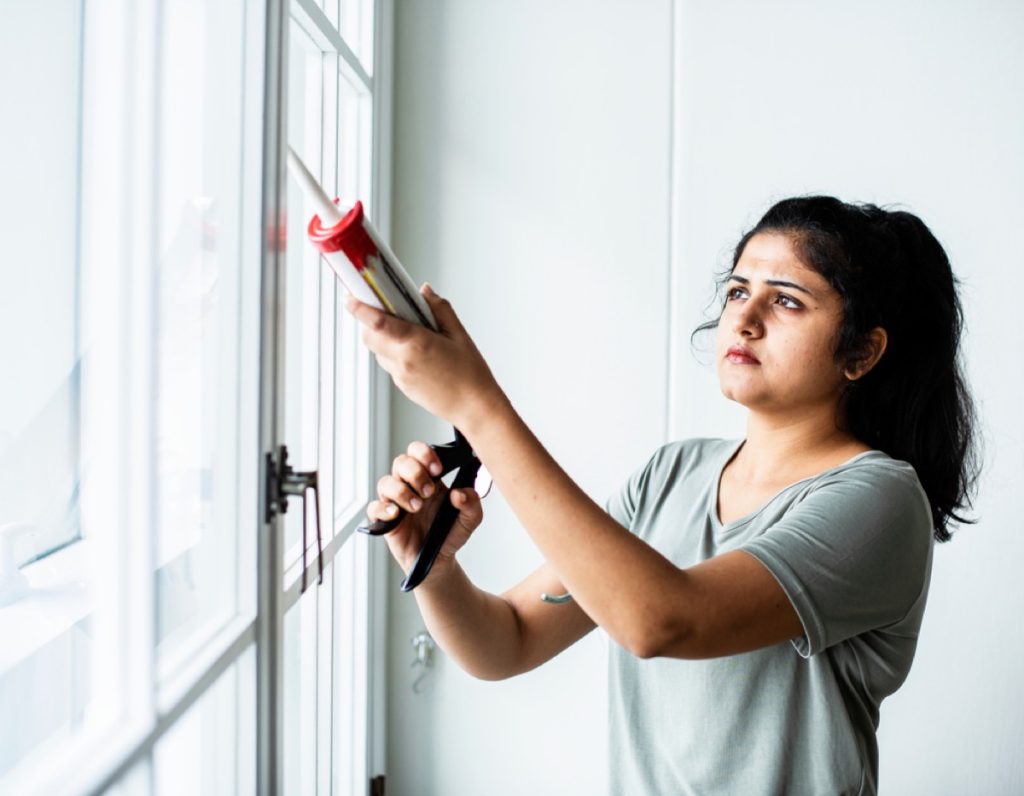
It may sound simple, but experts say it can be easy to forget that the best way to snake-proof your bathroom involves ensuring they aren’t getting into your house elsewhere. After all, an easy entryway in your basement or attic could allow them to eventually make their way further into your home as they look for a place to hide.
“Just like you’d want to cover vents, you’ll also want to inspect your home for any gaps, cracks, or holes in your foundation or other parts of your home,” says Phillips. “While these won’t offer such a straightforward path to your bathroom, once the snake is in your home through one of these gaps, it may make its way to your dark and comfortable bathroom.”
Fortunately, many of these projects can be pretty straightforward and DIY. “You can use various materials to seal these openings, including caulk, weatherstripping, and door sweeps,” says Mecham. “Sealing these openings will go a long way toward keeping snakes out of your bathroom. But it’s also a good idea to take some additional precautions. For example, you should always keep the bathroom door closed when not in use so they can’t make their way in to hide.”
6
Get rid of their food source.
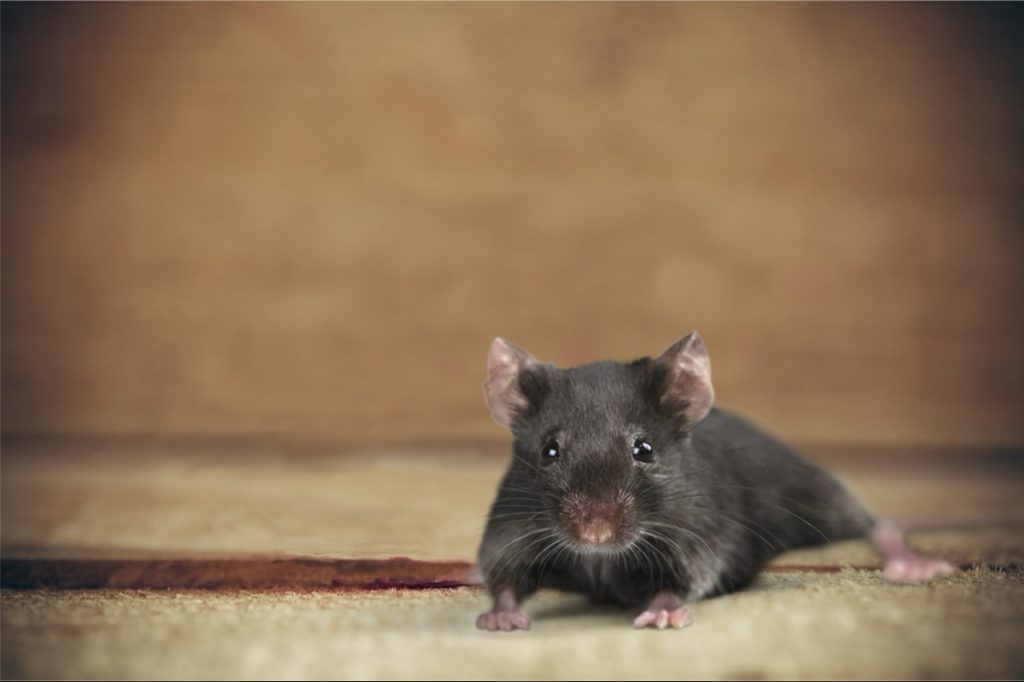
Snakes typically make their way into your home looking for warmth, but they often stick around if they have plenty to eat.
“If you have a snake problem in your bathroom, it’s likely because they’re attracted to the potential food sources that are present,” Mecham says. “To snake-proof your bathroom and keep these unwelcome guests out, you’ll need to eliminate their potential food sources.”
She explains that rodents tend to be a snake’s favorite meal—which means you may have another pest problem on your hands. “If you have rats or mice in your bathroom, they’re likely attracting snakes into the area. To get rid of rodents, you’ll need to set up bait stations and snap traps around the perimeter of the space,” Mecham notes. “You can also try using a natural repellent, such as peppermint oil, to keep them away.”
READ THIS NEXT: Watch Out for These Venomous Snakes “Suddenly Invading,” Experts Caution.
7
Call in the professionals.

Let’s be honest: Some problems around the house are just better left to those who know exactly what they’re doing. And when it comes to handling unwanted wildlife, the safest option for both parties can often involve making a call to your local pest control office to get the job done right.
“If you have a snake problem that you can’t seem to solve, you may want to try calling in a professional,” says Mecham. “A wildlife control company will be able to help you get rid of the snakes and figure out how they are getting into your bathroom in the first place. They will also be able to advise you on how to keep snakes out in the future.”